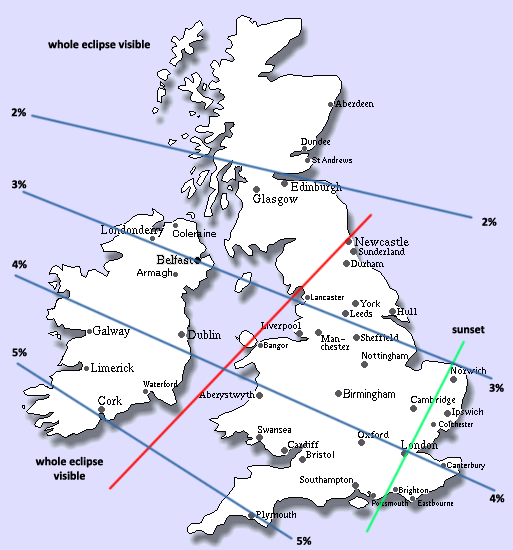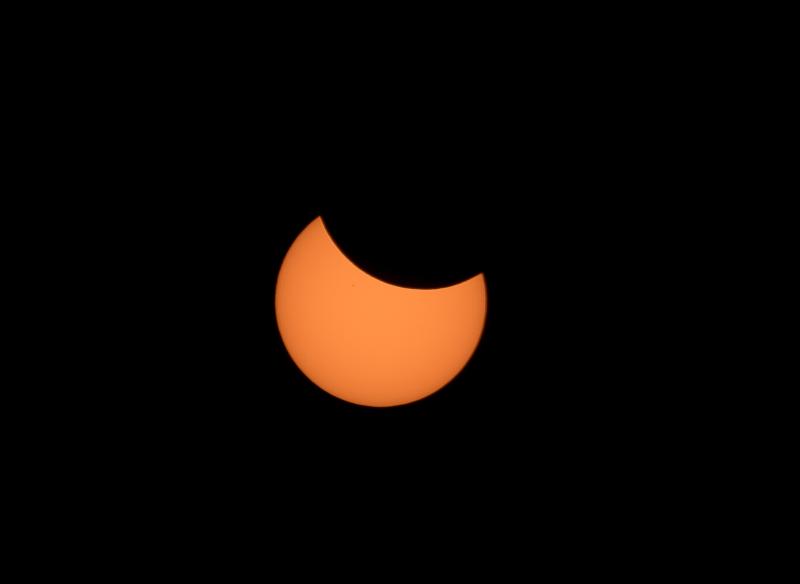2017 August 6
Solar Eclipse 2017
August 21
Just in case you may have missed the news, on August 21 this year, there will be a total solar eclipse. It has become newsworthy for one main reason – the path of the eclipse sweeps across the entire United States mainland. The whole of the country will be able to view at least a heavily partial eclipse. The central line – the path the moon’s shadow casts across the ground – will only be approximately 100 miles wide. This means that the majority of people living in America will have to travel if they wish to view totality. Weather permitting, this could easily become the most viewed solar eclipse in history. Encouraging people to travel to the centre line, and not simply “making do” with a partial eclipse, will be one of the biggest challenges for Umbraphile evangelists this year.
The last time that a total solar eclipse path crossed the United States was in 1918 (Saros 126). This too swept from Oregon down through to the South Eastern seaboard, mimicking closely this year’s eclipse (Saros 145) path. Maximum eclipse duration is equally similar – with 2min 23s compared to 2min 40s in August. The next eclipse across the USA will be in 2024. Interested parties have already pointed out that Carbondale (Illinois) – which this year will experience maximum eclipse duration – will also coincidently be along the path of totality for 2024.
For more details of the eclipse, please refer to the BAA Handbook 2017 (pages 14-15).
UK Visibility (Weather permitting)
At first, one may assume being so far away that any observers in the UK have no chance of observing any part of this phenomenon. However, this is not the case.
As can be seen from the map below, all bar the south eastern part of the UK have, with careful planning and a little forethought, the chance to view part of this eclipse.
North of the red line – observers are able to view from beginning to end of eclipse – albeit partial.
South-East of green line – observers will only be able to view the eclipse whilst the sun is setting
in-between the two lines – observers view eclipse in progress above horizon (but the end will be during sunset)
Percentage lines represent how much of the Sun shall be obscured by moon.

The main factor when considering how much of a partial eclipse one would expect to observe is the fact that we are at the very end of the eclipse path, and so the sun will be very low.
Things worth noting
- Observers in Eire, Northern Ireland, North of the Lake District and across to Newcastle Upon Tyne will be able to view the whole eclipse
- The further south you are, the more of the sun will be obscured. Penzance is 5.7% whilst Inverness is only 1.7 %
- Observers east of the Portsmouth-London-Norwich line will only be able to see an eclipse whilst the sun is setting.
- Height and a clear horizon will help your ability to make an observation, no matter where in the UK you choose to observe from. The South, South Western coastline of the UK and Eire will be most favourable. However, the weather along the Western coastlines can be rather changeable, so monitoring of weather information throughout the day will certainly help.
- Anyone want to try viewing from the top of the Shard in London, would probably get a great view at sunset!
The balance is thus
- How far you wish to travel?
- How high/unobscured western horizon you can find?
- Whether you are more interested in viewing the whole eclipse?
- Whether you are more interested in viewing the deepest eclipse?
Further details of timings can be found in the BAA Handbook 2017 (page 10)
The BAA and the Solar Section Director (Lyn Smith) would be very pleased to receive all observation reports and images. Hopefully we can get some from as far East as proved possible.

The Sun is a dangerous object to observe. Do not look at the Sun directly either through a telescope or with the unprotected naked eye. Any mistake can result in serious damage to your eyesight, so do not take any chances and always think about what you are doing.
Steve Harvey is the Director of the BAA’s Computing Section, and a keen solar eclipse and asteroid observer.
Readers may be interested to explore the BAA’s Solar Section, or to look at solar observations BAA members have uploaded to the BAA Members Pages.
| The British Astronomical Association supports amateur astronomers around the UK and the rest of the world. Find out more about the BAA or join us. |
